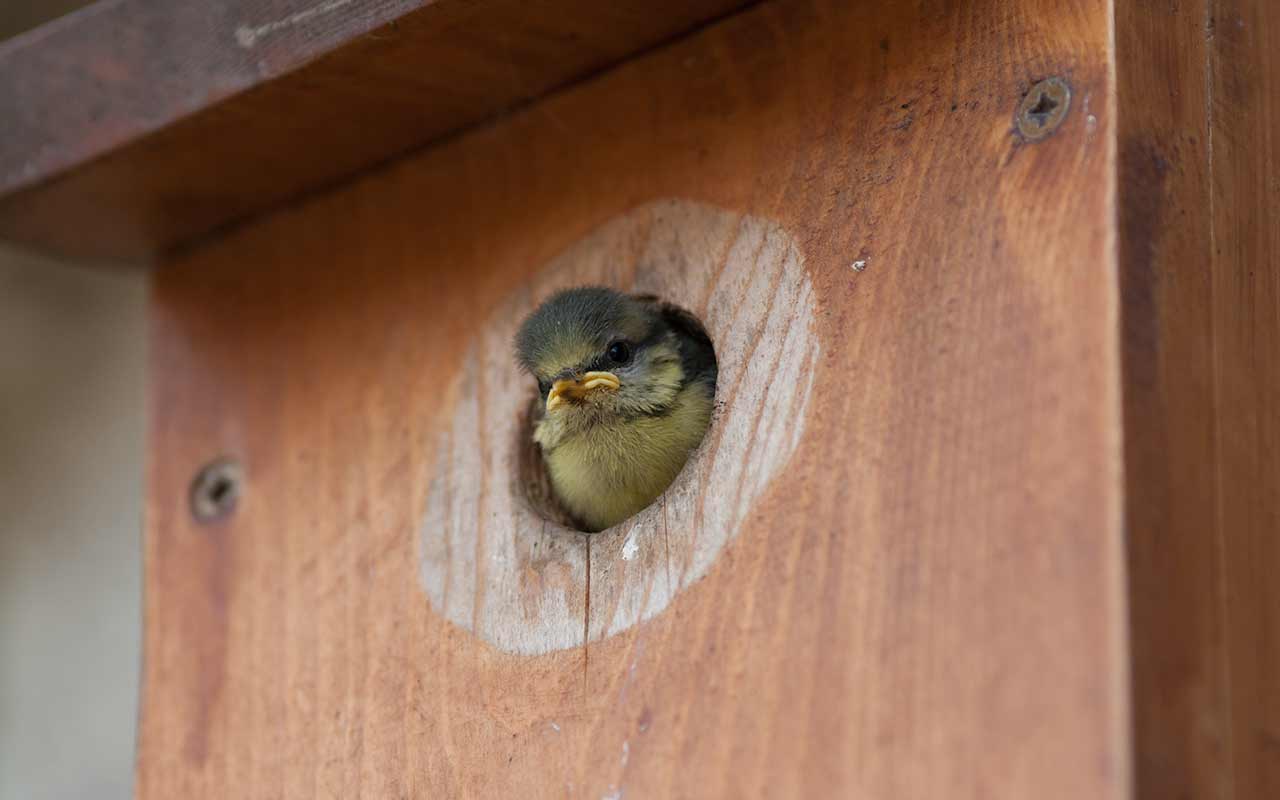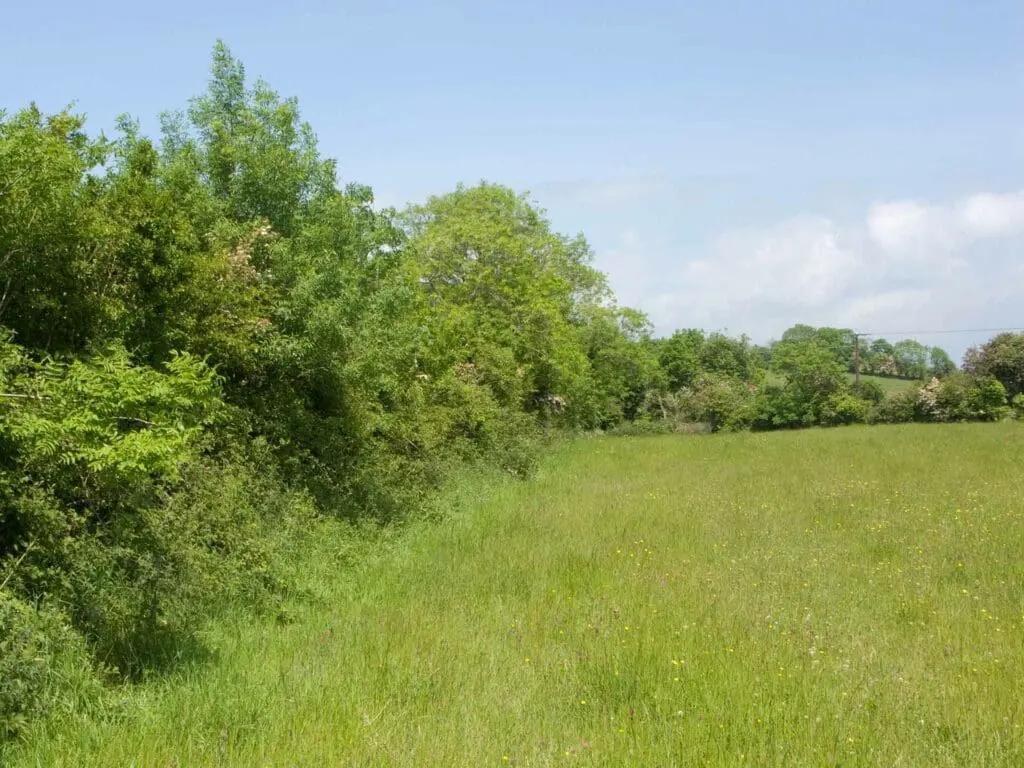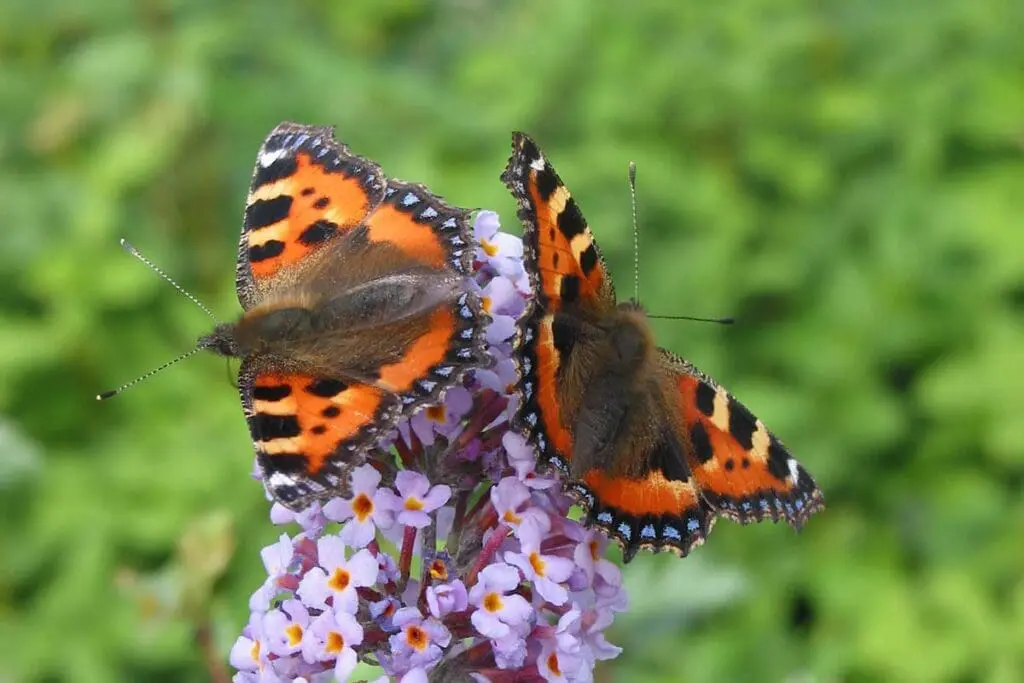If you follow some basic rules in your garden, you’ll make it more attractive for a wide variety of bird species. If you provide shelter, food and water you will encourage them to visit your garden and even become residents. You will soon enjoy watching birds close to your home.
Planting for birds
Food for birds can be naturally available in your garden if you design it carefully and chose the correct plants. Your garden does not need to be overgrown to attract wildlife, but it needs to have different types of habitats for the birds and for the insects and other animals that they eat.
Include some trees, hedges, shrubs that produce berries, herbaceous plants and colourful annuals and some climbers. Native species are often more suitable because they help to support a wide range of insects. However, introducing some non-native plants to help create some variation of structures and habitats will suit the needs of wildlife.
Trees like rowan, holly or birch are good native species for a small garden and, if you have more space, you can think about an ash or a willow. Hawthorn is a good choice for a hedge and cotoneaster or viburnum are suitable berrying shrubs. Plant some spring-flowering bulbs, such as crocus or daffodils and some climbers such as honeysuckle and ivy. Think about plants not only as flowers but also as foliage: include different coloured leaves, shapes and textures and mix evergreen and deciduous plants.
Try to adopt a more relaxed approach about gardening, avoiding chemicals to encourage other creatures that are food for birds. It also helps if you do not tidy up straight after plants have finished flowering to allow birds to eat the seeds. You can also leave piles of leaves and fallen fruit. Place some half-rotten logs to create a habitat for insects that the birds can eat.
Feeding birds
When to feed birds
As winter approaches, birds face the challenge of surviving in a season where food becomes harder to find. Cold is not a big problem for birds (unless the weather is particularly harsh), it is finding food to maintain fat supplies to store in the body and burn for energy which is the biggest challenge for them.
Try providing food on a regular basis and, if the weather is severe, feed twice a day in the morning and the early afternoon. The most suitable food for winter is fat balls, bird cake, seed mixtures or mealworms. Always remove nylon bags before putting out the fat balls or cakes.
Once you start putting out food, some birds may become dependent on the food you supply, so it’s important to top up the feeders to prevent the birds from having a wasted visit. Apart from winter, it is also important to put some food out at other times of the year, due to natural food shortages. By feeding all year round we will be sure birds could find food whenever this happens. Food shortages during the breeding period can be especially harmful to birds and a food supply can make a big difference. If the weather turns wet or cold during spring or summer, severe shortages of insect food can occur and, if the weather is exceptionally dry, earthworms will be unavailable to the ground feeders because of the hard soil.
There is a difference in the type of food we should put out depending on the time of the year. In spring and summer birds require high protein food, especially while moulting. Black sunflower seeds, pinhead oatmeal, raisins, mealworms, seed mixtures without loose peanuts, food bars and summer seed mixture can all be used. Fruit pieces are also a good choice. Fat, bread and whole peanuts can be harmful to nestlings at this time and should be avoided. Always bear in mind that the more types of food you provide the more species you will attract.
What NOT to feed
Never feed birds milk or salty food (these can cause disease and even death). You should also not feed them margarine or vegetable oils as they can destroy the waterproofing and insulating qualities of feathers.
Be careful not to put out any mouldy or stale food, because it can cause food poisoning, respiratory infections or death. Stale food also attracts rats and mice.
If food turns mouldy or stale on your feeders, try reducing the amount you feed as you may be placing too much food for the birds to eat in one day.
How to feed
All the items designed for birds to feed, drink or bathe should be placed where the birds are safe and will be able to feed undisturbed. Do not place them near fences or hedges where cats can reach them. It is also good to have a small bush nearby, that birds can use as a look-out point.
- Bird tables: suitable for any food and any species. Try to find a simple one, easier to clean, rather than complicated designs.
- Nut feeders: made of steel mesh. To be safe for birds they need to have a mesh size large enough to prevent beak damage and small enough to prevent large pieces of nut from being removed, 6mm is a good choice. Please don’t use the nylon bags!
- Seed feeders: tubular containers with holes designed for the birds to be able to reach the seed.
- Home-made feeders: you could use things like half coconuts filled with fat or bird cake hanging from your bird table, a tree or a wall. A suspended log with holes or crevices filled with fatty food can be a good idea to feed agile birds (drill your own holes if the log has none). Some birds prefer to feed on the ground. For these, you can scatter food such as apples or bread on the lawn or use a ground feeding tray. Remember to space the food out to reduce competition.
Shelter and nesting places
Birds need cover to protect themselves against predators, wind, rain and snow and also to roost and build their nests. You can provide this by planting dense hedges and a variety of trees of different heights. Thorny plants will protect birds from predators and evergreens will provide cover during the cold, wet winter season.
Nestboxes can also be a good way of attracting birds to your garden. Even if you provide plenty of food, birds may not have suitable places to nest. The species that will nest in your box depend on the type you use, where it is located and its surroundings. Placing different types of boxes in different places could attract several species to your garden.
The best time of the year to put up nestboxes is autumn. In the following months, many birds may enter your nestbox, looking for suitable nesting or roosting sites. Place your box in a quiet place, out of the reach of cats. Try siting it between north and east in order to avoid the wettest winds and strong sunlight. You should clean the nestboxes during the winter to prevent a build-up of debris and to remove parasites.
Water
Providing a regular supply of clean water for birds to drink and bathe in is very important, especially in winter and dry weather. Most birds need to drink at least twice a day. Birds need water to bathe in order to keep their feathers in good condition and to loosen dirt.
There are different ways to provide water for birds in your garden, mostly depending on the size of your garden:
- Bird baths: the simplest way of providing water. Basically a large dish with a rough surface filled with water would do. It needs to have shallow sloping sides for the birds to approach the water. Try placing the bath at different points around the garden to find the most popular site. Birdbaths should be cleaned every week or so to remove layers of algae, dead leaves or bird droppings.
- Ponds. If your garden is big enough it would be a good idea to build a pond. A pond will not only provide water for birds to drink and bathe, but will also create habitats for other animals such as insects or frogs. Having a pond in your garden is also wonderful to look at and as a place to discover wildlife.




